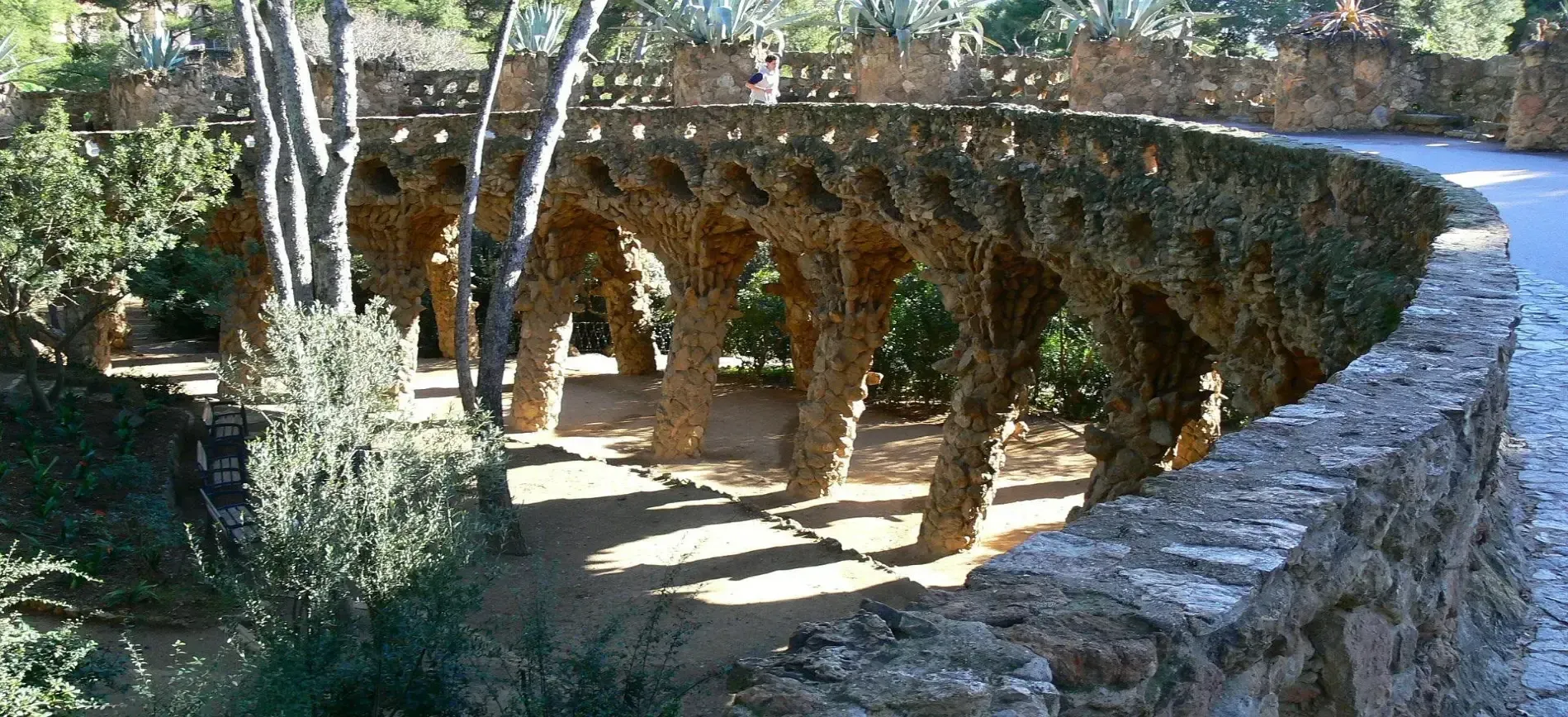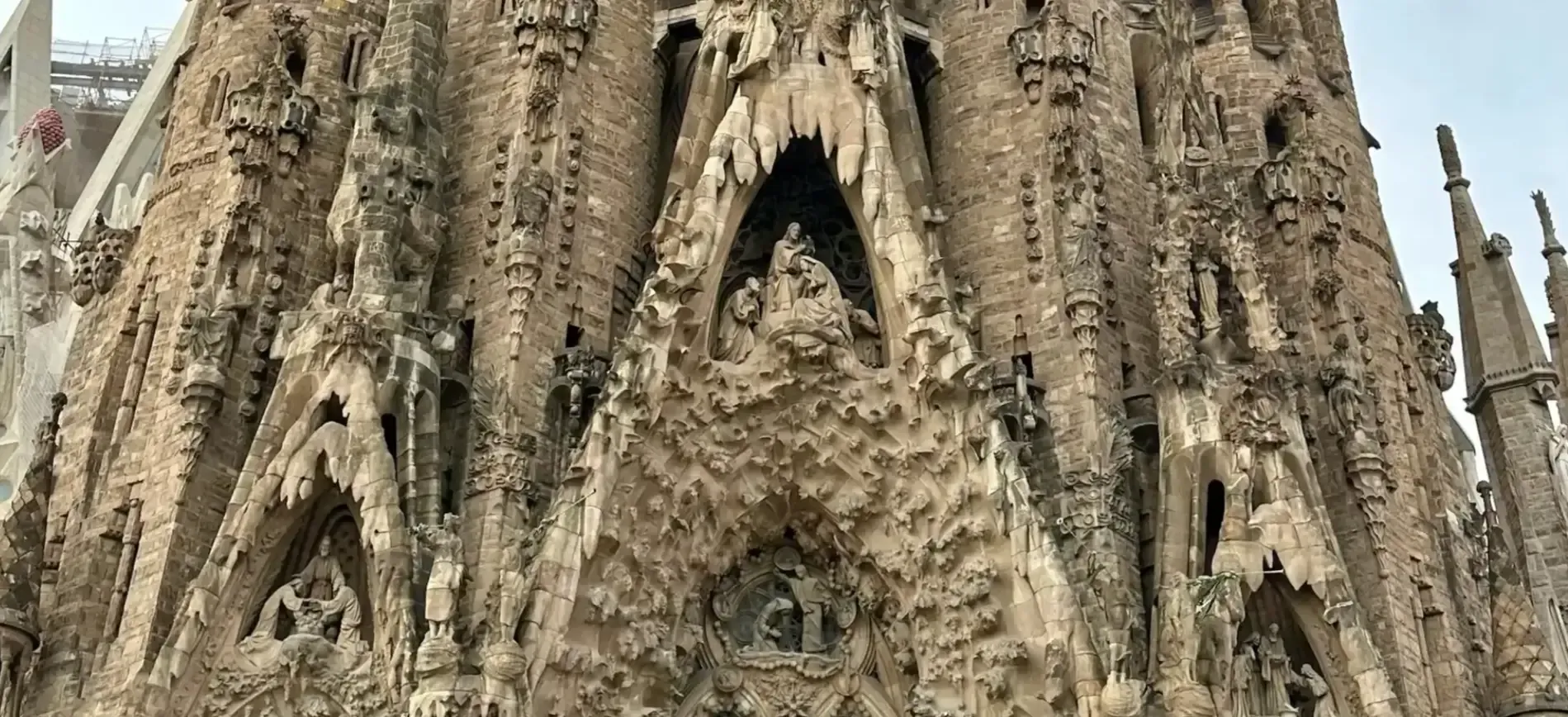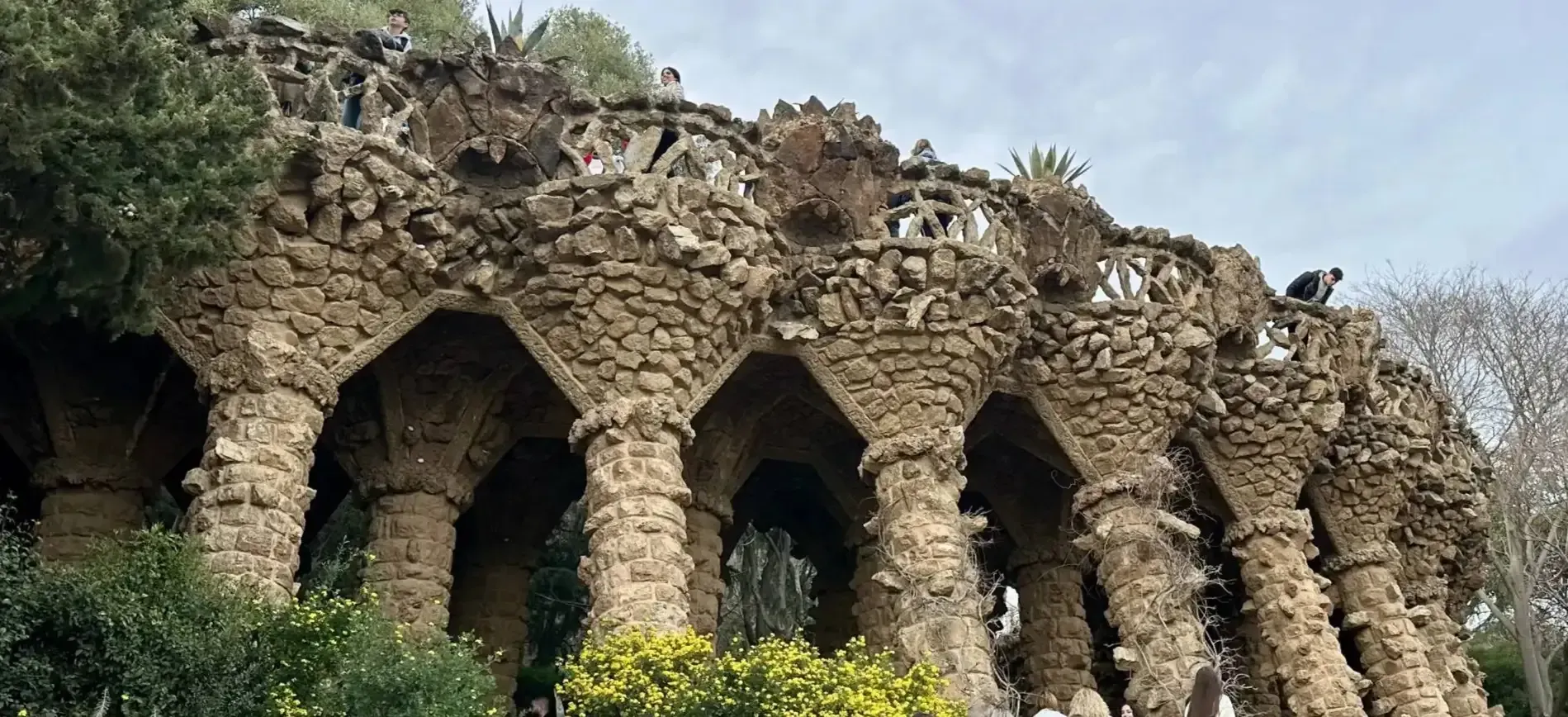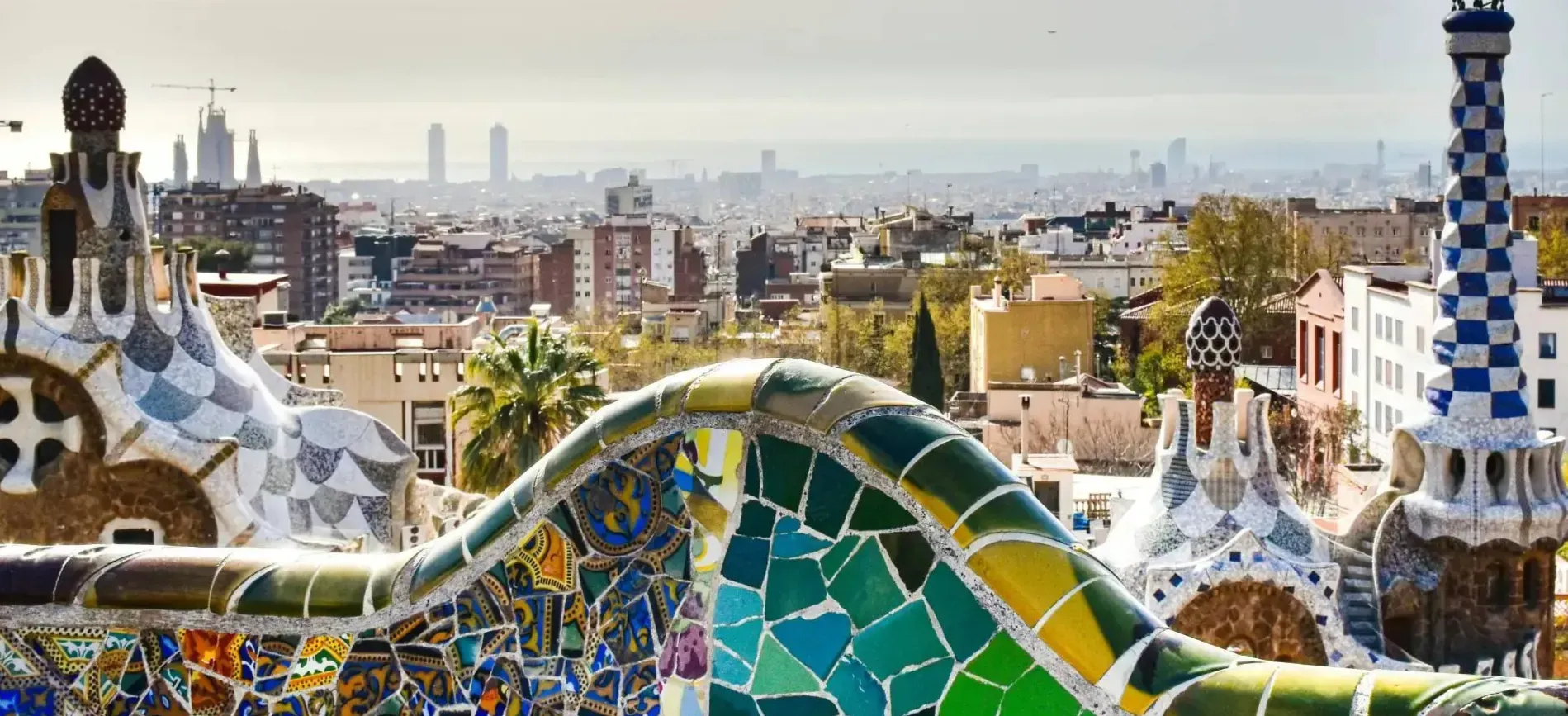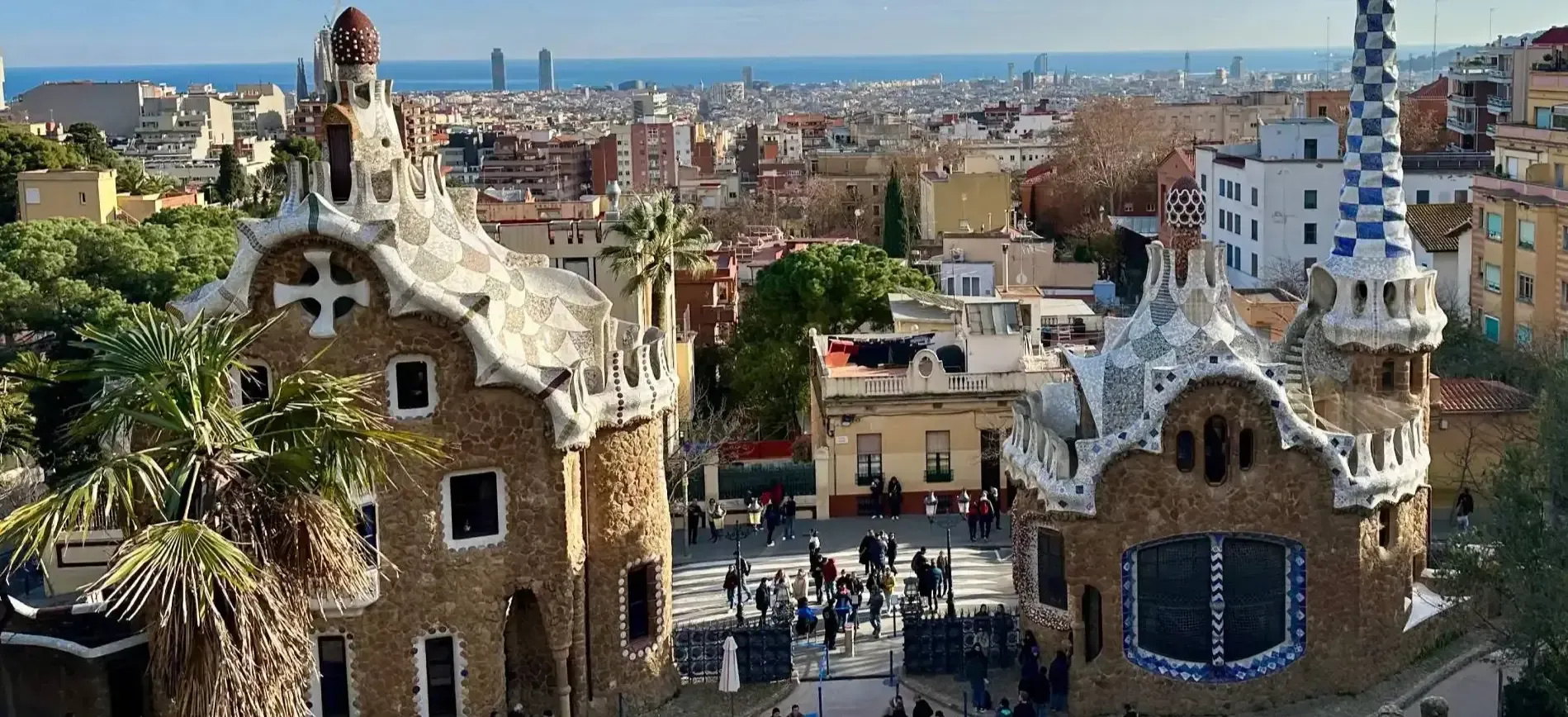Who is Antoni Gaudí? A Guide to Barcelona’s Architectural Legend
March 22, 2025
Who is Antoni Gaudí? A Guide to Barcelona’s Architectural Legend
Who is Antoni Gaudí?
Antoni Gaudí, often hailed as the "Architect of God," was a visionary whose extraordinary creations have forever transformed the city of Barcelona and the world of architecture. With his distinctive blend of artistry, innovation, and natural inspiration, Gaudí's legacy is woven into the fabric of Catalonia’s cultural identity and continues to captivate millions of visitors each year. As you walk through the enchanting grounds of Park Güell, marvel at the intricate facades of Casa Batlló, or gaze at the towering spires of the Sagrada Família, you’ll find yourself immersed in a world unlike any other—a world designed by Antoni Gaudí.
The Early Life of a Genius
Antoni Gaudí was born on June 25, 1852, in the small town of Reus, located in Catalonia, Spain. As the youngest of five siblings in a family of coppersmiths, Gaudí grew up surrounded by craftsmanship and creativity. His fascination with nature began at an early age, and he often spent hours observing the geometric patterns and organic shapes found in plants, animals, and landscapes. This deep connection to the natural world would later become one of the hallmarks of his architectural style.
Despite suffering from poor health in his youth, Gaudí showed exceptional determination and intellect. In 1870, he moved to Barcelona to study architecture at the Escola Tècnica Superior d'Arquitectura. Although his academic performance was initially unremarkable, his talent and originality soon gained recognition. Upon graduating in 1878, the director of the school famously remarked, "We have given this diploma either to a madman or a genius; time will tell."
The Evolution of Gaudí's Style
Gaudí’s architectural journey was marked by evolution and experimentation. His early works reflected the influence of Gothic and Oriental styles, but as he matured, his designs became increasingly unique and innovative. By blending Modernisme (Catalan Art Nouveau) with elements inspired by nature, religion, and geometry, Gaudí developed an organic and expressive style that defied convention.
Central to Gaudí’s philosophy was the idea that architecture should be a harmonious blend of functionality and beauty. He viewed buildings as living organisms, designing structures that mimicked the shapes and forms found in nature. Curves replaced straight lines, vibrant colors brought designs to life, and intricate details transformed ordinary spaces into works of art.
Gaudí’s Masterpieces
Park Güell: A Whimsical Wonderland
Park Güell is perhaps the most playful and imaginative of Gaudí's creations. Originally conceived as a residential project by industrialist Eusebi Güell, the park became a public space when the housing development plan failed. Today, it stands as one of Barcelona's most iconic landmarks and a UNESCO World Heritage Site.
Wander through the colorful mosaic pathways, admire the serpentine bench that overlooks the city, and don’t miss the famous "El Drac" lizard sculpture—every element of the park reflects Gaudí’s whimsical creativity. The integration of natural elements into the design, coupled with the breathtaking views of Barcelona, makes Park Güell a must-visit for tourists and locals alike.
Sagrada Família: The Unfinished Masterpiece
The Sagrada Família is a testament to Gaudí's ambition and devotion. Begun in 1882 and still under construction today, this monumental basilica is a masterpiece of religious architecture and symbolism. Gaudí envisioned the basilica as a representation of the divine, with its intricate facades depicting the Nativity, Passion, and Glory of Christ.
The interior of the Sagrada Família is equally awe-inspiring, with towering columns resembling trees, stained-glass windows casting vibrant light, and geometric patterns creating a sense of harmony and balance. Though Gaudí passed away in 1926 before the project was completed, his vision continues to guide the architects working on the basilica.
Casa Batlló: A Dreamlike Creation
Casa Batlló is a stunning example of Gaudí’s ability to transform ordinary structures into extraordinary works of art. Located on Barcelona’s Passeig de Gràcia, this residential building is renowned for its wavy facade, colorful glasswork, and fantastical details. The rooftop features chimneys that resemble organic forms, adding to the dreamlike quality of the design.
Step inside Casa Batlló, and you’ll find an equally enchanting interior, with curved walls, vibrant tiles, and innovative features that showcase Gaudí’s genius. It’s no wonder Casa Batlló is one of Barcelona’s most photographed landmarks.
Casa Milà (La Pedrera): A Fusion of Functionality and Art
Casa Milà, often referred to as La Pedrera (The Quarry), is another iconic example of Gaudí’s work. This apartment building, completed in 1912, is characterized by its undulating stone facade, wrought-iron balconies, and rooftop chimneys shaped like warriors.
Beyond its striking appearance, Casa Milà is an engineering marvel, with innovative construction techniques that allow for natural ventilation and light. The design exemplifies Gaudí’s ability to merge practicality with artistic expression.
Gaudí’s Legacy
Antoni Gaudí’s contributions to architecture and design have left an indelible mark on Barcelona and the world. His works reflect a deep appreciation for nature, a profound spiritual connection, and an unwavering dedication to creativity. In recognition of his impact, seven of Gaudí’s creations, including Park Güell, Casa Batlló, and the Sagrada Família, have been declared UNESCO World Heritage Sites.
Gaudí’s untimely death on June 10, 1926, after being struck by a tram, marked the end of an era, but his legacy continues to thrive. The ongoing construction of the Sagrada Família serves as a reminder of Gaudí’s enduring influence, and his masterpieces remain a source of inspiration for architects, artists, and visitors worldwide.
Why Park Güell is the Perfect Introduction to Gaudí’s Genius
If you’re planning a trip to Barcelona, Park Güell offers the perfect introduction to Antoni Gaudí’s world. Its vibrant colors, imaginative designs, and breathtaking views provide a glimpse into the mind of a true genius. Booking a guided tour of Park Güell allows you to uncover the hidden stories and meanings behind each element of the park, from the iconic mosaics to the carefully planned layout.
Whether you’re exploring Gaudí’s signature style for the first time or rediscovering his works, Park Güell is a testament to the architect’s brilliance and an essential part of any Barcelona itinerary.
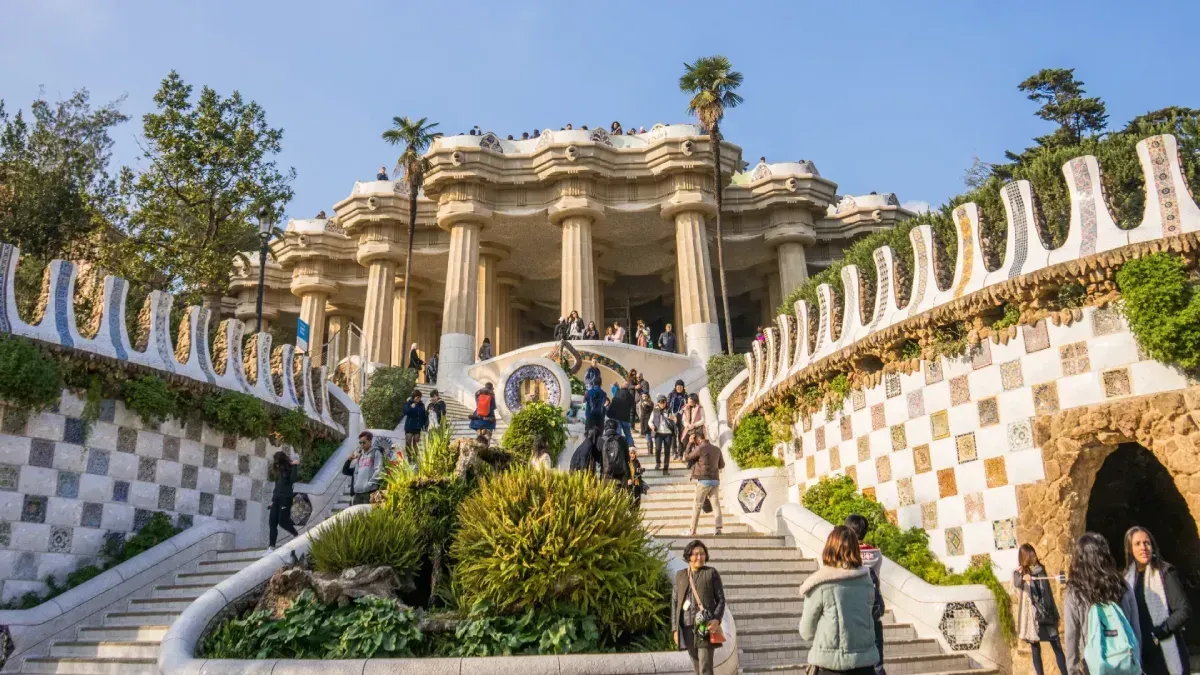
Discover Park Güell in Barcelona: A Masterpiece of Modernism Park Güell lies in the Catalonia region of Spain and is one of the most well-known parks in Barcelona. This unique park features powerful models of architectural ingenuity immersed in the essence of nature, a hallmark of Antoni Gaudí’s style. Apart from being a symbol of Barcelona, this site has also been classified as a UNESCO World Heritage Site. These features have earned Spain as many as 4 million tourists every year. This write-up covers every aspect from the history and design of Park Güell to important pointers for tourists. What is Park Güell? History of Park Güell Designed by Eusebi Güell, who was an industrialist, Park Güell was intended to be part of a residential development project that did not progress in construction after it was decided that a ‘garden city’ was to be formed for the elite. He had partnered with Gaudí, who did much of the design work, and after some progress was made, instead of completing the area as residential, Gaudí finished it off and transformed it into a public park. His vision for the park was to integrate organic structures with nature, which ultimately defined the landmark of modernistic architecture. Construction work commenced in 1900, but given the economically challenging times, completion was marked as 1914 as the final date. Until 1922, the park remained privately owned. Gaudí’s works within the park and his other modernistic designs were finally honoured with UNESCO world heritage recognition in 1984 due to the unique blend of culture and architecture found in them. Park Güell’s UNESCO World Heritage Status UNESCO named Park Güell a World Heritage site in the year 1984 for its cultural and artistic significance. It was categorised under the Works of Antoni Gaudí. Park Güell is a perfect example of Gaudí’s genius because of his nature-inspired designs and unique ways of using materials and space. The park is one of Gaudí’s many creations in Barcelona, all of which contribute to the city’s identity and architectural features. Where is Park Güell Located in Barcelona? Located in the Gràcia district, Park Güell sits on the required Carmel Hill. The place is notable amongst nature and art lovers as it provides breathtaking views of the city and the Mediterranean Sea. Accessibility and Transportation Options With regards to public transport, Park Güell is quite conveniently reachable. By Metro: The closest metro station to Park Güell is Lesseps (Line 3), which is about a 20-minute walk to the park's entrance. By Bus: Several bus lines, including the number 24 and 92, stop close to the park, making it easy for visitors to access. Walking Routes: If you're staying in the nearby Gràcia neighborhood, you can easily walk up to the park. It’s a bit of a climb, but the scenic route is worth it. By Taxi or Car: There are parking options near the park, but they can be limited, especially during peak tourist seasons. It's recommended to use public transport whenever possible. Key Attractions in Park Güell Park Güell is abundant with structures that showcase innovation and organic design by Gaudí, the famous architect. Check out some of the park's highlights: Gaudí’s Iconic Architecture Mosaic Lizard (El Drac): One of the most famous landmarks in Park Güell, this colorful ceramic lizard sits at the entrance to the park. Known as "El Drac" (the dragon), it has become an iconic symbol of Gaudí's work. Serpentine Bench: This long, winding bench that wraps around the park’s main square is covered in vibrant, mosaic tiles. It provides not only a place to sit but also a fantastic view of the city below. Hypostyle Hall: This large, open space with 86 stone columns was designed as a market area. The hall’s design mimics natural forms, with the ceiling featuring intricate mosaics that showcase Gaudí’s ability to combine functionality with beauty. The Monumental Zone Monumental Zone is the most popular part of Park Guell, which is also the most ticketed section of the park. This area can be visited after acquiring an entrance ticket, which enables visitors to access the park's most important sites. The Dragon Staircase: Located at the entrance, this staircase features colorful mosaics and the famous lizard statue. The Greek Theatre: This large open space is surrounded by a beautiful colonnade and is used for cultural events and concerts. Free Access Areas Though much of the park is ticketed, visitors can enjoy various areas of Park Güell that remain free. These zones are ideal for those wishing to bask in the beauty of the park without the crowd. The Viaducts: Gaudí designed several viaducts that wind through the park, offering great walking paths with views of the city. Wooded Areas and Hillside Paths: For a quieter experience, head to the park’s wooded areas, which offer a more peaceful environment to enjoy the park’s flora and fauna. Gardens and Nature Besides the gardens, there are also undeveloped areas in which nature thrives at Park Guell. Every part of the park is accompanied by trees, flowers, and plants that are arranged as meticulously as its architecture and serve an equally important purpose alongside the construction of the park. Gardens of the Austrian and Scandinavian Gardens: These areas feature Mediterranean plants and offer beautiful views of the surrounding landscape. Walking Paths: Enjoy the tranquility of the park's walking paths, which lead you through various sections of the park. Tips for Visiting Park Güell To make the most of your visit to Park Güell, here are some helpful tips to ensure you have an enjoyable and stress-free experience. Best Time to Visit Avoid Crowds: To avoid the crowds, it’s best to visit early in the morning or later in the evening. The park tends to be less crowded on weekdays, especially in the off-season (fall or winter). Best Seasons to Visit: Spring and fall offer the best weather for visiting Park Güell. The temperatures are mild, and the gardens are in full bloom. Ticket Information and Pricing Entrance Fees: While some areas of the park are free, the Monumental Zone requires a ticket. Tickets can be purchased online in advance to skip the long lines. Discounts and Free Entry: Children under 7 years old and residents of Barcelona can enter for free. There are also discounts for seniors and groups. Accessibility for All Wheelchair Access: Park Güell is wheelchair accessible, with ramps and elevators available for easy access to different areas of the park. Family-Friendly Amenities: The park offers family-friendly facilities such as restrooms, picnic areas, and a children’s playground. Things to Pack Comfortable Shoes: The park’s uneven paths and steep inclines make comfortable walking shoes essential. Water and Snacks: There are limited food options within the park, so it’s a good idea to bring water and snacks with you. Park Güell and Gaudí: A Deep Dive Into the Artist's Vision Park Güell stands out among other structures constructed by Antoni Gaudí because of its brilliant architectural designs alongside a garden-like setting. To admire the park, one must fully understand the artist’s views, guiding principles, and passion for life, nature, and art. Antoni Gaudí’s Influence in Barcelona Antoni Gaudí wasn’t simply an architect, he was an artist, a designer, and a modernist at heart. His diverse works are mostly based on organic forms, nature, and religion which, to this day, shape the city of Barcelona. Along with Park Güell, some of his best known works are: La Sagrada Familia: Perhaps Gaudí’s most famous work, this colossal cathedral, still under construction, is an architectural masterpiece that incorporates elements of nature and religious symbolism. Casa Batlló and Casa Milà (La Pedrera): These two buildings in the heart of Barcelona are prime examples of Gaudí’s innovative use of curves, shapes, and light, transforming everyday architecture into extraordinary works of art. Every single one of these structures, coupled with Park Güell, captures Gaudí’s very distinctive style that blends usefulness with artistry. He frequently incorporated natural features like curved shapes, flowing contoured patterns, and colourful pieces of art to foster a balance between the manmade environment and nature. The Symbolism Behind Park Güell Park Guell is a symbol of a host of Gaudi’s nature, religious and personal beliefs. The stunning park not only has a superb visual impact but also contains essence which enhances the experience. Nature as Inspiration: Gaudí’s love for nature is evident in his use of organic forms throughout the park. The curving shapes of the Serpentine Bench and the twisted columns of the Hypostyle Hall mimic the natural forms found in trees, plants, and animals. Religious Symbolism: Gaudí’s deep Catholic faith influenced many of his designs. For example, the park’s mosaic lizard (El Drac) is often interpreted as a symbol of the Garden of Eden or even the biblical serpent. The Use of Color and Geometry: The park’s colorful mosaics and geometric patterns also have a deeper meaning. The vibrant tiles are often seen as a representation of the Spanish Mediterranean tradition, and the use of vivid color is a way to connect the park’s structures with the surrounding natural landscape. Park Güell: Cultural and Artistic Impact One of the marvels of modernist architecture that greatly impacted not only the art world, but also city planning along with urban design and architecture is Park Guell. The beauty of Park Guell is astounding, but it also teaches us valuable lessons in community planning, sustainability and creativity. How Park Güell Influenced Modernist Architecture Güell Park was a fundamental example of Catalan Modernism and was important to the development of architecture in the early 20th century. Its colourful, organic forms and creative spatial integration further pioneered the design of many other buildings afterwards. The Integration of Architecture with Nature: Gaudí’s design philosophy emphasized the harmony between human-made structures and the natural world. Park Güell’s seamless blend of the built environment with natural elements is one of its most innovative aspects. Today, this approach continues to influence contemporary architecture, where sustainability and nature integration are key considerations. The Use of Sustainable Materials: Gaudí was one of the earliest proponents of using recycled materials in architecture. The mosaics in Park Güell, for example, are made from broken ceramics, tiles, and glass. This technique not only added to the park’s uniqueness but also served as an early example of sustainability in architecture. The Park as a Model for Sustainable Urban Planning Park Guell is one of the first urban projects that has integrated green spaces within the city limits. Though it was designed as a private housing estate, its redevelopment into a public park facilitated the construction of one of Barcelona's most cherished urban green areas. The Importance of Green Spaces in Urban Environments: The park exemplifies how green spaces can enhance the quality of life in cities, providing a peaceful oasis amidst the hustle and bustle of urban life. Encouraging Walkability: Gaudí designed the park with a focus on walkability, incorporating winding paths and public spaces that encourage visitors to explore at their own pace. This approach to urban design has influenced the development of pedestrian-friendly areas in cities around the world.

